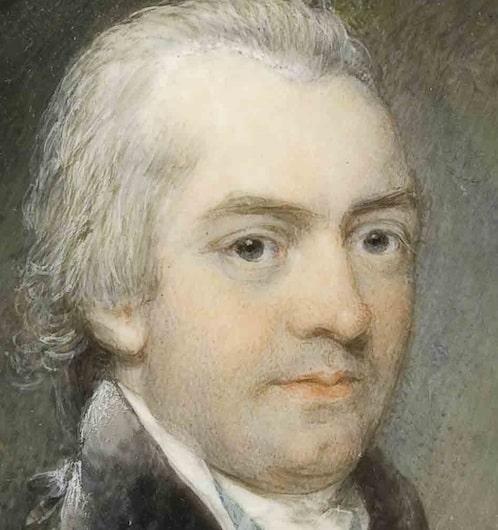Robert Willan, M.D., the founder of English dermatology, was born on the 12th November, 1757, at Hill, near Sedburgh, in Yorkshire, where his father, Robert Willan, M.D., one of the society of Friends, and the author of a sensible Essay on the King’s Evil, 8vo. Lond. 1746, was in the enjoyment of a wide reputation and. an extensive business. He received his general education at Sedburgh; his classical education at the grammar school of that town under the Rev. Dr. Bateman, and his mathematical under Mr. Dawson. In both of these departments he distinguished himself beyond his fellows, and by the time he left school was deemed to excel his master, confessedly a good scholar, in a critical knowledge of Greek. He commenced his medical studies at Edinburgh in 1777, and graduated doctor of medicine there 24th June, 1780 (D.M.I. de Jecinoris Inflammatione). Dr. Willan then visited London, and for one season attended lectures with great assiduity. In 1781 he settled at Darlington, where he published a small tract, entitled, "Observations on the Sulphur Waters of Croft." But he soon removed to London, and was appointed physician to the Public dispensary on its establishment in the early part of 1783. Dr. Willan was admitted a Licentiate of the College of Physicians 21st March, 1785.
The Public dispensary, in the course of Dr. Willan’s tenure of office there, became a favourite school with young physicians for instruction in the practical part of their profession. His practice there was very numerously attended, and many (it was said more than forty) physicians who subsequently attained to a foremost place in reputation and business in London and elsewhere, were among his pupils. In 1796 Dr. Willan commenced a series of monthly reports containing a brief account of the weather and of the prevalent diseases in the metropolis. These reports were published in the Monthly Magazine, and were continued to the year 1800, when he collected them into a small volume, and published them under the title of "Reports on the Diseases of London." The work is pregnant with original and important observations, especially on points of diagnosis. In December, 1803, finding his increasing engagements incompatible with the time and care he had always given to the duties of the dispensary, he resigned his office there. The governors of the charity, to mark their gratitude for his services and their esteem for his character, named him consulting physician, made him a life governor, and presented him with a handsome piece of plate.
Dr. Willan was an accomplished classical scholar, a good antiquary, and a sound practical physician. He was the first in this country to arrange diseases of the skin in a clear and intelligible manner, and to fix their nomenclature on a satisfactory and classical basis. He thus facilitated the comprehension of a difficult department of pathology, and invested the study of cutaneous disease with an interest and popularity which have gone on increasing to the present time. What were the circumstances which directed Dr. Willan’s attention in an especial manner to diseases of the skin is not known. As early as 1784 and 1785, he had begun to attend to the elementary forms of eruption. He saw that upon that, or some such basis, could a definite nomenclature alone be founded, and upon it at a later period he erected the system developed in his great work. He sought out, with untiring zeal, the original acceptation of all the Greek, Roman, and Arabian terms applied to eruptive diseases, and he finally founded his nomenclature on this basis. His arrangement and nomenclature were probably decided about the year 1789, as in the following year his classification was laid before the Medical Society of London, and honoured by the award of the Fothergillian gold medal of 1790. The practical utility of Willan’s simple classification is remarkably evidenced in the fact, that notwithstanding the great advances made of late years in cutaneous medicine, it is still used by the bulk of English practitioners for all diagnostic purposes, as at once the most simple and satisfactory mode of classing diseases of the skin.
Dr. Willan’s opus magnum, the Description and Treatment of Cutaneous Diseases, 4to. Lond., was issued in parts. The first part appeared in the beginning of 1798; the others at long and varying intervals; the last, which Dr. Willan lived to see through the press, in 1808. A remaining part on Porrigo and Impetigo was published separately after his death by his relative, Dr. Ashby Smith, in 1814. The appearance of the first part of this work established Dr. Willan’s reputation, and the emoluments he derived from his practice were thenceforward ample. He was generally consulted by persons labouring under cutaneous disease, and was, as generally deferred to by his medical brethren, as the ultimate appeal on these subjects. In 1810 Dr. Willan’s health began to give way, and after a time symptoms of pulmonary consumption were developed. He went to Madeira, and died there on the 12th April, 1812, aged fifty-four. Dr. Willan " was one of the most amiable of men, a sincere friend, a good husband, and an affectionate father. He was, in truth, a model of the perfect human character, a benevolent and skilful physician, a correct and sound philosopher, and a truly virtuous man."(1)
Dr. Willan was elected a fellow of the Society of Antiquaries in 1791, and a fellow of the Royal Society in 1809. In addition to the works mentioned above, Dr. Willan was the author of a valuable treatise "On Vaccine Inoculation." 4to. Lond. 1806; and in 1821 there appeared in one volume his "Miscellaneous Works; comprising an Inquiry into the Antiquity of Small-pox, Measles, and Scarlet Fever; Reports on the Diseases of London, and detached papers on Medical Subjects. Edited by Ashby Smith, M.D." 8vo. Lond.
William Munk
[(1) Gent.Mag., vol. lxxxii, pt. i, p. 595]

